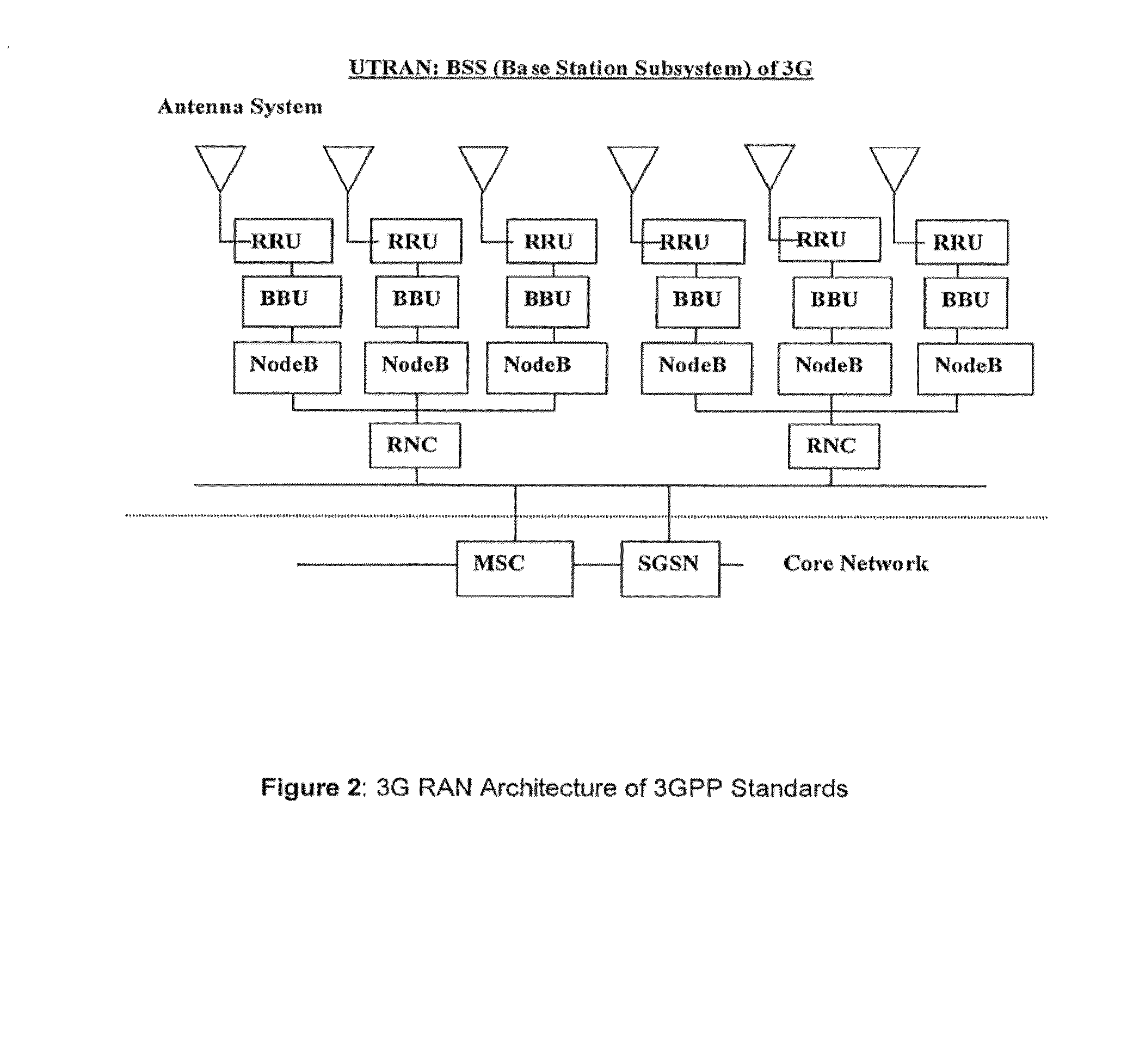Method and system for wireless transmission of of analog signals between antenna and baseband processor
- Summary
- Abstract
- Description
- Claims
- Application Information
AI Technical Summary
Benefits of technology
Problems solved by technology
Method used
Image
Examples
Embodiment Construction
[0046]Certain embodiments of the methods and systems described below overcome some or all of the difficulties described above and facilitate efficient transmission and aggregation of RRU data for a single BBU.
[0047]To facilitate effective aggregation, it is important to know whether the transport media at different locations match the traffic demands. Because the central processing lies at the BBU (and the number of RRUs that can be connected with a single BBU is limited), it is critical to know how many RRUs a BBU can connect to in terms of fiber infrastructure. In the CPRI approach, for example, it is very limited. By sharing the infrastructure with other ground systems, resilience and protection become important.
[0048]Problems of CPRI-based C-RAN are first described. By using the CPRI version of RRU-BBU link, the HF signals are first digitized to generate the CPRI payload, and then this electrical signal is converted into an optical signal to allow transmission over a light beam....
PUM
 Login to View More
Login to View More Abstract
Description
Claims
Application Information
 Login to View More
Login to View More - R&D
- Intellectual Property
- Life Sciences
- Materials
- Tech Scout
- Unparalleled Data Quality
- Higher Quality Content
- 60% Fewer Hallucinations
Browse by: Latest US Patents, China's latest patents, Technical Efficacy Thesaurus, Application Domain, Technology Topic, Popular Technical Reports.
© 2025 PatSnap. All rights reserved.Legal|Privacy policy|Modern Slavery Act Transparency Statement|Sitemap|About US| Contact US: help@patsnap.com



